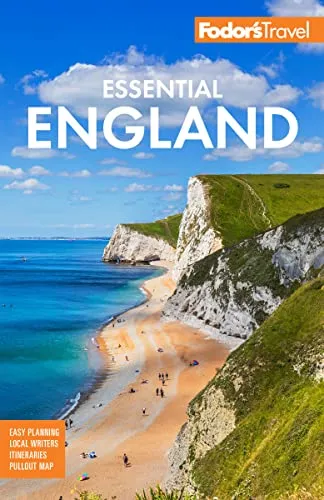Yorkshire
Yorkshire
A hauntingly beautiful region, Yorkshire is known for its wide-open spaces and dramatic landscapes. The hills of the North York Moors and the Yorkshire Dales glow pink and purple with heather in summer, turning to black in winter.
Rugged fishing villages like Robin Hood's Bay cling to the edges of cliffs in one of England's most unspoiled areas. Period architecture abounds in York, with its narrow medieval streets, or in historic spa towns like Harrogate, while ancient cathedrals, abbeys, and castles provide majestic backdrops to day-to-day life in the area.
Some of the region's biggest attractions are the result of human endeavor: York's towering Gothic cathedral, created by unknown master craftsmen; Castle Howard, Vanbrugh and Hawksmoor’s baroque masterpiece near York; and...
Read MoreA hauntingly beautiful region, Yorkshire is known for its wide-open spaces and dramatic landscapes. The hills of the North York Moors and the Yorkshire Dales glow pink and purple with heather in summer, turning to black in winter.
Rugged fishing villages like Robin Hood's Bay cling to the edges of cliffs in one of England's most unspoiled areas. Period architecture abounds in York, with its narrow medieval streets, or in historic spa towns like Harrogate, while ancient cathedrals, abbeys, and castles provide majestic backdrops to day-to-day life in the area.
Some of the region's biggest attractions are the result of human endeavor: York's towering Gothic cathedral, created by unknown master craftsmen; Castle Howard, Vanbrugh and Hawksmoor’s baroque masterpiece near York; and the dramatic Fountains Abbey near Ripon, the largest monastic ruins in England.
The Yorkshire landscape, however, is just as compelling. The most rugged terrain is the North York Moors, a large windswept moorland (crossed by cultivated valleys), where flocks of Scottish Blackface or Swaledale sheep graze freely. The landscape that inspired the Brontë sisters (whose former home in the small hilltop village of Haworth is now a museum) is found in the West Yorkshire Pennines, with their moors and rocky crags punctuated by gray-stone villages. Farther to the north are the lush, green uplands and valleys known as the Yorkshire Dales, where the high rainfall produces swift rivers and sparkling streams. These are wonderfully peaceful places, except in summer, when hundreds of hikers (or "ramblers," as they're known in England) appear over the hills, injecting life into the local economy. In recent years, severe winter storms have caused major flooding in the Yorkshire Dales and surrounding areas, leading to the closure of roads and sites. Be sure to check the weather before you travel.
The area isn’t all green fields and perfect villages—there's also a gritty, urban aspect to the region. In West Yorkshire, once down-at-heels Leeds has remade itself with trendy restaurants and cafés, along with a buzzing music industry and nightlife scene.
Around York. West and north of York a number of sights make easy, appealing day trips from the city: the spa town of Harrogate, atmospheric Knaresborough, the ruins of Fountain Abbey, the market town of Ripon, and nearby Newby Hall. If you're heading northwest from York to Harrogate, you might take the less direct B1224 across Marston Moor, where, in 1644, Oliver Cromwell won a decisive victory over the Royalists during the English Civil War. A few miles beyond, at Wetherby, you can cut northwest along the A661 to Harrogate. Also nearby toward the northeast is Castle Howard, a magnificent stately home.
Leeds and Brontë Country. Rocky and bleak, this windswept stretch of country provides an appropriate setting for the dark, dramatic narratives penned by the Brontë sisters in Haworth. The busy city of Leeds provides a good starting point for a tour of West Yorkshire. From here you can strike out for the traditional wool towns, such as Saltaire, a UNESCO-protected gem, and the Magna museum at Rotherham, which draws long lines for its surprisingly interesting exploration of steel production. But the main thrust of many visits to West Yorkshire is to the west of Leeds, where the stark hills north of the Calder Valley and south of the River Aire form the landscape immortalized in the equally unsparing novels of the Brontë sisters. The gray-stone village of Haworth might have faded into obscurity were it not for the enduring fame of the literary sisters. Every summer, thousands toil up the steep main street to visit their former home. To truly appreciate the setting that inspired their books, though, you need to go farther afield to the ruined farm of Top Withens, which, in popular mythology, if not in fact, was the model for Wuthering Heights.
The Yorkshire Dales. Waterfalls, ancient woodlands, rugged uplands, and exceptionally scenic valleys make for splendid views. To the west of the North York Moors, this landscape has been shaped by limestone: lush green valleys (known as dales, the Viking word for valley) lie between white limestone scars (cliffs), while broad uplands are punctuated with dark fells (crags). The limestone cliffs, filled with caves, invite exploration.
As well as dramatic landscapes like the spectacular cliffs and gorges at Malham Cove and Gordale Scar, the area has some breathtaking waterfalls. Ruined priories, narrow roads, drystone walls made without mortar, and babbling rivers make for a quintessentially English landscape, full of paths and trails to explore.
The North York Moors. The North York Moors are a dramatic swath of high moorland starting 25 miles north of the city of York and stretching east to the coast and west to the Cleveland Hills. Only a few pockets remain of the dense forest that once covered the area. The transformation began during the Middle Ages, when the monks of Rievaulx and Whitby abbeys began raising huge flocks of sheep. Over the course of centuries, the sheep have kept the moors deforested, which ensures that the pink heather on which they feed spreads lushly across the hills. A series of isolated, medieval "standing stones" that once served as signposts on the paths between the abbeys are still handy for hikers.
For more than four decades, the area has been a national park, ensuring the protection of the bleak moors and grassy valleys that shelter brownstone villages and hamlets. Minor roads and tracks crisscross the hills, but there's no single, obvious route through the region. You can approach from York; another approach is from the coast at Whitby, along the Esk Valley to Danby, which is also accessible on the Esk Valley branch-train line running between Middlesbrough and Whitby. From Danby, minor roads run south over the high moors reaching Hutton-le-Hole, beyond which main roads lead to such interesting market towns as Helmsley, on the moors' edge. Completing the route in this direction leaves you with an easy side trip to Castle Howard before returning to York.
The North Yorkshire Coast. The coastline of the North York Moors paints a dramatic view of spectacular white cliffs covered in pink heather plummeting down to the dark sea hundreds of feet below. The red roofs of Robin Hood's Bay, the sharply curved bay at Whitby, and the gold-and-white buildings of Scarborough capture the imagination at first sight. Most coastal towns still support an active fishing industry, and every harbor offers fishing and leisure trips throughout summer. Beaches at Scarborough and Whitby have patrolled areas: swim between the red-and-yellow flags, and don't swim when a red flag is flying. All the North Sea beaches are ideal for fossil hunting and seashell collecting.
Recommended Fodor’s Video
Hotels
Things to Do
Things to Do
Explore Things to Do
Find the perfect tours and activities in Yorkshire.
Where to Eat
Where to Eat
Need to Know
Need to Know
Language
EnglishNearby Airports
LBAElectrical Outlets
230v/50 cycles; plugs have three rectangular bladesCurrency
PoundLanguage
EnglishElectrical Outlets
230v/50 cycles; plugs have three rectangular bladesCurrency
PoundNearby Airports
LBAWhen to Go
To see the heather at its most vibrant, visit in summer (but despite the season, be prepared for some chilly days). It's also the best time...Read More
Neighborhood Guides
Discover the best neighborhoods in Yorkshire with curated recommendations from our editors.
When to Go
To see the heather at its most vibrant, visit in summer (but despite the season, be prepared for some chilly days). It's also the best time...Read More
Neighborhood Guides
Discover the best neighborhoods in Yorkshire with curated recommendations from our editors.
When to Go
To see the heather at its most vibrant, visit in summer (but despite the season, be prepared for some chilly days). It's also the best time...Read More
Neighborhood Guides
Discover the best neighborhoods in Yorkshire with curated recommendations from our editors.
Articles
Articles See All
Guidebooks
Guidebooks
Our worldwide travel correspondents bring you the best and most up-to-date coverage of over 7,500 global destinations.
Shop NowFodor's Essential England
Whether you want to dine in London, marvel at Stonehenge, or explore the Cotswolds, the...
Fodor's Essential Great Britain: with the Best of England, Scotland & Wales
For over 80 years, Fodor's Travel has been a trusted resource offering expert travel...














